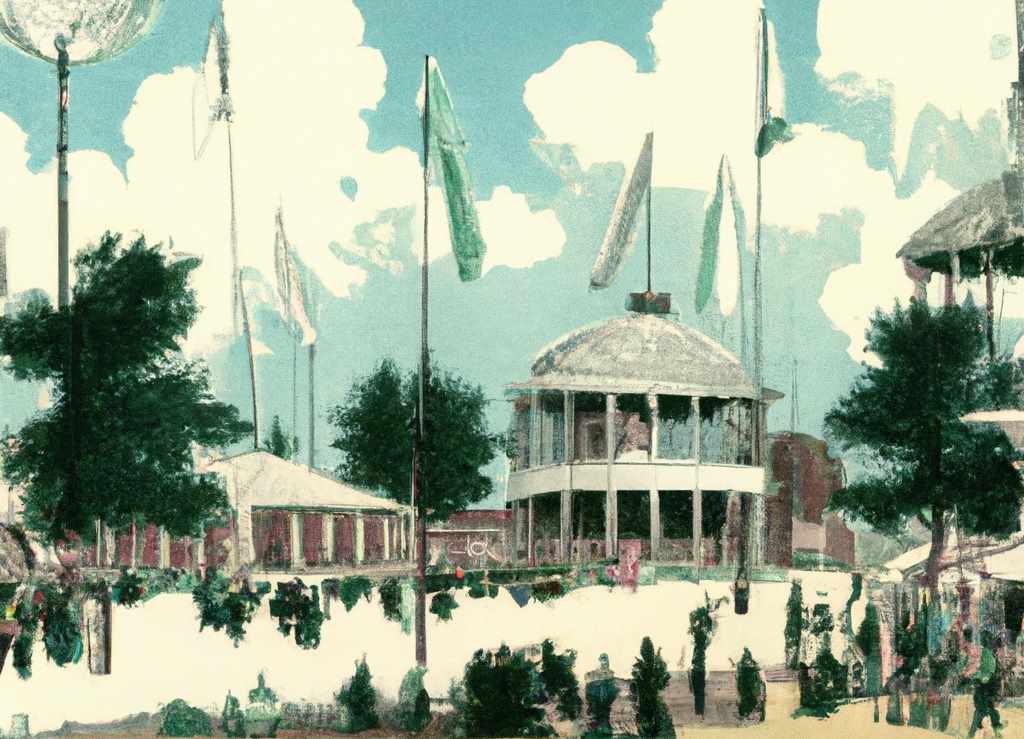Significant American Expositions: Showcasing Innovation, Culture, and Progress in the Late 19th and Early 20th Centuries were held in America that were not officially classified as World’s Fairs, but were still significant events in their own right. These expositions were typically large-scale exhibitions that showcased the latest advancements in science, technology, and culture, and attracted millions of visitors from around the world.
These American expositions were important because they helped to promote American industry and culture, while also fostering international cooperation and exchange of ideas. Many of these expositions also had lasting impacts on the cities in which they were held, leaving behind important cultural and architectural landmarks.
Here are some of the notable American expositions from this time period, listed by date:
- Centennial Exposition (Philadelphia, 1876): Held to commemorate the 100th anniversary of the signing of the Declaration of Independence, this exposition featured exhibits from over 30 countries and drew over 10 million visitors. It also featured the first public display of the telephone, and the debut of Heinz ketchup and Hires root beer.
- World’s Columbian Exposition (Chicago, 1893): This exposition celebrated the 400th anniversary of Christopher Columbus’s arrival in the Americas, and showcased the latest innovations in technology and industry. It also featured the first Ferris wheel, which stood 264 feet tall and carried over 1.5 million passengers.
- Louisiana Purchase Exposition (St. Louis, 1904): Held to commemorate the 100th anniversary of the Louisiana Purchase, this exposition showcased the latest advancements in science and technology, as well as exhibits highlighting the culture and traditions of various nations from around the world. It also featured the first Olympic Games held in the United States.
- Panama-Pacific International Exposition (San Francisco, 1915): Held to celebrate the completion of the Panama Canal, this exposition showcased the latest advancements in industry and technology, and featured exhibits from over 20 countries. It also marked the debut of the Palace of Fine Arts, which still stands today as a major cultural landmark in San Francisco.
- Century of Progress Exposition (Chicago, 1933-1934): This exposition celebrated the 100th anniversary of the city of Chicago, and showcased the latest advancements in science, technology, and industry. It also marked the debut of several important architectural landmarks, including the Adler Planetarium and the Sky Ride, which offered visitors a bird’s-eye view of the exposition grounds.
- Atlanta Cotton States Exposition (Atlanta, 1895): This exposition was held to showcase the economic potential of the Southern United States, and specifically to promote the region’s cotton industry. It featured exhibits from over 30 states and several foreign countries, and drew over 800,000 visitors.
- New Orleans CENTENNIAL EXPOSITION (New Orleans, 1884): This exposition celebrated the 100th anniversary of the city of New Orleans and the Louisiana Purchase. It featured exhibits highlighting the city’s rich cultural heritage, as well as displays showcasing the latest advancements in science and technology.
- Trans-Mississippi & International Exposition (Omaha, 1898): This exposition was held to promote the economic and cultural development of the American West, and featured exhibits highlighting the region’s natural resources and industries. It also showcased the latest advancements in science and technology, and featured displays from several foreign countries.
- Charleston South Carolina Interstate and West Indian Exposition (Charleston, 1901-1902): This exposition celebrated the economic and cultural connections between the American South and the West Indies, and featured exhibits highlighting the region’s cultural heritage, as well as displays showcasing the latest advancements in science and technology. It also marked the debut of several important architectural landmarks, including the iconic Charleston Navy Yard Gate.
All of these expositions played important roles in promoting American industry, culture, and identity, and helped to foster international cooperation and exchange of ideas. They also left behind important cultural and architectural landmarks that continue to serve as symbols of American progress and innovation.
